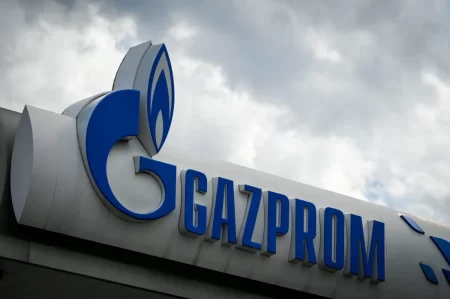As more nuclear plants restart and renewable energy gains momentum, Japan’s LNG imports are at their lowest in over a decade, spurring companies to turn to Asia to unload supplies contracted during past market shocks, such as Russia’s 2022 invasion of Ukraine.
Energy flexibility and security concerns ensure that Japan wants to stay a big player in LNG, but it is looking for markets to sell its excess, in line with a government strategy to keep volumes at 100 million tonnes by building gas demand in Asia.
This year, Tokyo Gas announced a study for 1.5-gigawatt LNG-to-power project in Vietnam and bought a stake in an LNG regasification terminal in the Philippines, while trading houses Marubeni and Sojitz launched a 1.8 GW-big LNG-fired power plant in Indonesia.
Led by JERA, Tokyo Gas, Osaka Gas and Kansai Electric Power, Japan is a stakeholder, feedstock provider or participant in studies for more than 30 gas-related projects, data from the Institute for Energy Economic and Financial Analysis (IEEFA) and Reuters shows.
Whether operating or yet to be launched, these are located in Bangladesh, India, Indonesia, Malaysia, Myanmar, the Philippines, Singapore, Taiwan, Thailand, and Vietnam.
“Japanese LNG demand is uncertain, but the government wants to secure stable supply over the long term,” said Yoko Nobuoka, senior analyst for Japan power research at LSEG.
“Developing its own trading capability and creating an Asia-wide gas market would help to increase energy security and hedge risks of LNG surplus,” she said.
Japan stepped up imports of LNG after the Fukushima nuclear disaster of 2011 led to closure of all its nuclear power reactors, and Tokyo has increased participation in LNG projects globally to secure supply.
But the comeback of nuclear power and the roll-out of renewable energy have led resource-scarce Japan to cut LNG imports for its own needs, with shipments falling by 8% last year to the lowest since 2009.
In 2020, the industry ministry adopted a plan to hold LNG handling capacity, including trade, at 100 million tons a year by 2030, a key feature of which was building Asian gas markets.
“There are various pathways towards achieving carbon neutrality or net-zero emissions in Asia,” METI said in emailed comments. “Gas and LNG, along with renewables and energy conservation, can play a role in the pathways.”
Japan’s shipments, both for domestic use and sent to third countries, were 102 million tons of LNG, in the year that ended in March 2023.
Tokyo Gas, the country’s top city gas supplier, has set a target of trading 5 million tons of LNG annually by 2030, up from about 3 million now.
“We have a chance to sell LNG to these projects and it will contribute to an increase in our LNG trading volume,” Tokyo Gas officials told Reuters in emailed comments.
Since 2019, Japanese firms have invested in new LNG import terminals with combined capacity of 16.2 million tons in Bangladesh, Indonesia and the Philippines, according to Reuters calculations based on the International Gas Union data.
Another 13 million tons a year of LNG import capacity is to come in Vietnam and India with Japan’s investment before 2030, taking the total such volume to 29.2 million tons – close to what Japan traded in the year ended in March 2023.
Japan’s LNG sales to third countries doubled to 31.6 million tons in fiscal 2022 from fiscal 2018, boosted by participation in upstream projects globally and supply contracts, the Japan Organization for Metals and Energy Security (JOGMEC) says.
Of Japan’s 102 million tons of LNG imports in fiscal 2022, domestic use accounted for 71 million tons.
With Japan’s own LNG demand projected to fall another quarter by the end of the decade to some 50 million tons, top utilities JERA, Tokyo Gas, Osaka Gas and Kansai Electric could have 12 million tons of LNG oversupply, the IEEFA estimates.
DESTINATION CLAUSES
Tokyo’s growing LNG ambitions are reshaping its procurement strategy.
In fiscal 2021, 53% of gas bought by Japanese firms, or 45 million tons, was under contracts banning resale, a condition imposed by producers such as Qatar, according to JOGMEC.
That share fell to 42% last fiscal year, its survey showed, partly also because Tokyo clinched more deals with more flexible producers, such as the United States and Australia.
“However, by 2030, 60% of contracts will not have destination restrictions, meaning that Japan’s ability to trade LNG is likely to increase this decade,” said Christopher Doleman, an LNG specialist at IEEFA.
Trading competition with China, which surpassed Japan as the biggest LNG buyer last year and is expanding into global trade, also plays a role.
China’s LNG imports are forecast to grow by up to 12% this year, to 80 million tons, PetroChina says, and Beijing is reselling some LNG to third countries.
“In the medium term to 2030, trading competition could become fierce, as the next bearish cycle begins with a wave of new supply,” LSEG’s Nobuoka said, referring to new LNG projects set to go onstream in coming years that need buyers.
TRANSITION PUSHBACK
Climate activists increasingly say Japan, with a quarter of its power generated by non-nuclear renewable energy, should bypass gas, which the industry considers a “transition” fuel, and help other countries to decarbonise by moving straight to renewables from coal.
Australian Market Forces, a climate activist group that holds shares in Chubu Electric Power and Tokyo Electric Power, co-owners of top utility JERA, has urged it to rethink plans for Asia and sharpen focus on renewables instead.
“One of the greatest threats to climate action globally is the proposed build out of LNG-to-power infrastructure in emerging Asia,” said Will van de Pol, chief executive of Market Forces.
As a transitional fuel, LNG is ‘indispensable for achieving decarbonisation,’ JERA, which has both gas and renewable energy projects in Asia, told Reuters by email.
Reporting by Katya Golubkova and Yuka Obayashi in Tokyo, additional reporting by Emily Chow in Singapore; Editing by Tony Munroe and Clarence Fernandez – Reuters




